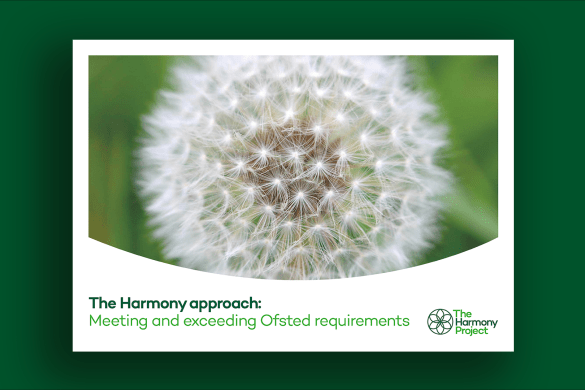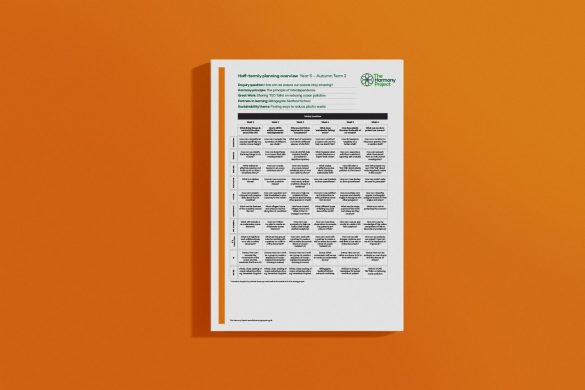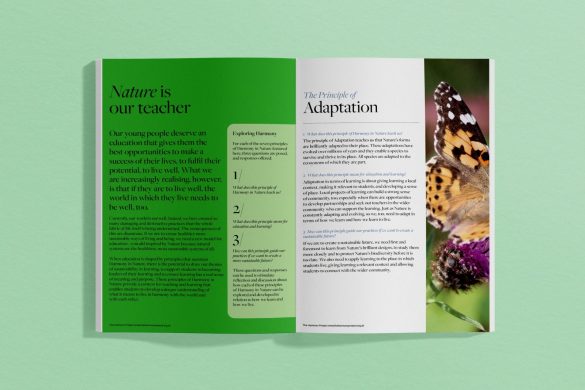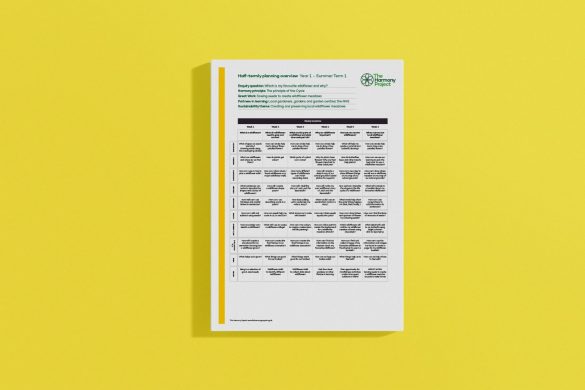How does Harmony meet and exceed Ofsted expectations?

Find out how a whole-school approach to Harmony aligns with descriptors from the Ofsted school inspection handbook
At The Harmony Project, we strongly believe that our approach to education is not only rich and stimulating, but relevant and meaningful, addressing the issues of our time.
We know that many young people are desperate to learn about what they can do to look after our world. The student volunteers at Teach the Future are living proof of this. They are calling for educators to be trained to teach young people about the current climate and ecological crises and to empower them to address these crises in practical, well-informed ways.
Using Nature’s principles of Harmony – principles of Interdependence, Cycles, Diversity, Adaptation, Health, Oneness and Geometry – to guide and inform the curriculum, the Harmony approach provides a way for young people to learn, not just about Nature and in Nature, but – critically – from Nature. This way of learning helps them understand how Nature teaches us what we need to do and how we need to be if we are to live sustainable, healthy lives.
The Harmony curriculum and Ofsted
The Harmony Project provides the means for a school to adopt a holistic, whole-school and whole-child approach to learning that is fully in line with Ofsted requirements.
The Harmony curriculum is guided by seven natural principles; we call them principles of Harmony. Of these principles, six (the principles of Interdependence, Cycles, Diversity, Adaptation, Health and Oneness) are explored once each year through six enquiries of learning, each lasting one half term. The seventh principle, the principle of Geometry, is a golden thread that runs through all the learning, teaching pupils the beautiful shapes and patterns of Nature. It is a Nature-inspired approach to learning.
This spiral curriculum, in which concepts are revisited year on year, gives pupils the opportunity to build on previous learning (201, 212) and ensures that new learning is connected to earlier learning to deepen pupils’ understanding of each of the principles of Harmony (213).

Harmony: a spiral curriculum
This spiral curriculum, in which concepts are revisited year on year, gives pupils the opportunity to build on previous learning (201, 212) and ensures that new learning is connected to earlier learning to deepen pupils’ understanding of each of the principles of Harmony (213). In this way, with principles of Harmony explored each year in different contexts, pupils develop a clear understanding of the meaning of these principles and of how they can ensure the health and sustainability of the natural world and indeed our own well-being.
Aligning with Ofsted requirements
One of the requirements stipulated in the Ofsted handbook is that the curriculum builds towards clearly defined end points (201, 212, 222). The Harmony approach does this in two ways; through the ‘Great Work’ at the end of each half-term’s enquiry of learning and through the learning journey pupils undertake through the school. The Great Work applies and celebrates the learning in a memorable, relevant way.
Pupils learn what Harmony means for them, in their personal relationships and in relation to Nature.
The Harmony Project provides schools with a range of resources to ensure the learning content for each enquiry is current and correct, and that there is a clear structure to the curriculum (199, 202, 212).
There is also a focus on bringing real-life experiences to the learning through ‘partners in learning’. These partnerships provide pupils with opportunities to engage with the wider community and society (250), and they enrich the children’s learning through the expertise of the partners. This helps to prepare children for their adult lives (250, 251) and it promotes positive attitudes (234, 251, 254) by making learning enjoyable and meaningful for them and ensuring it has clear outcomes.
There is a strong emphasis on celebrating diversity in the Ofsted handbook (251, 254, 257). One of the key principles of Harmony that is revisited each year is the principle of Diversity. This means pupils are not only taught about diversity in relation to each other, they also get regular opportunities to explore diversity in Nature and to understand why diversity in any form is important.
Meanwhile, the principle of Health provides a focus for pupils’ physical, mental and spiritual well-being (251).
In summary, Harmony provides pupils with a new way of learning to see the world and helps them to understand how the world works according to a set of universal principles. It offers schools a methodology that ensures pupils can make sense of the world in which they live and their place in it. It encourages them to reflect on what it means to live a life in harmony (254, 340).



